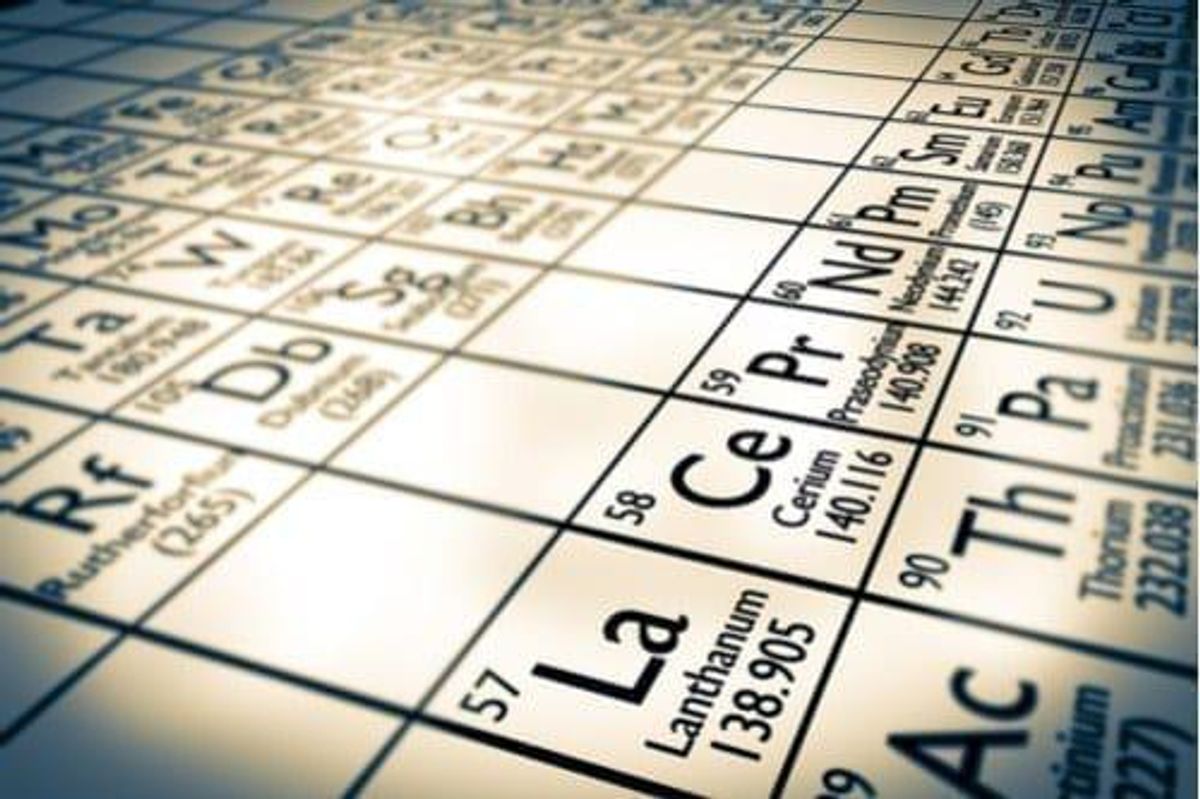
As demand steadily grows around the world, many wonder if a rare earths shortage will materialize in the coming years.
Will our insatiable need for high-tech gadgets, electric vehicles and clean energy materials lead to a widespread rare earths shortage?
Every day we unwittingly interact with an array of rare earths — they’re in the planes that transport us through the air, in the sonar systems that scan the sea floor and everything in between. These 17 minerals have become an integral part in the evolution of technology and society.
As demand for rare earths steadily grows, output remains flat, theoretically creating the perfect environment for a rampant shortfall. But will one materialize?
The short answer is probably not, or at least not right away.
“While most rare earths are in a general surplus supply, most notably cerium and lanthanum, neodymium supply and demand were estimated to have reached equilibrium as of 2017, which makes the market more sensitive to disruptions in supply,” Nils Backeberg, deputy manager at Roskill, told the Investing News Network in late 2018.
“Neodymium prices saw a spike in end 2017, related to an increased market tightness following environmental inspections in China causing sustained closures and speculative trading exacerbating the situation,” he explained.
Ongoing environmental crackdowns in China are likely to continue to impact the global rare earths sector, largely because China is the world leader in production, accounting for 105,000 of the 130,000 tonnes produced in 2017.
China is also getting increasingly restrictive in the amount of rare earths it exports, opting to reduce foreign shipments in favor of using the materials domestically or stockpiling.
This alone has created volatility in the sector that was further exacerbated last year, when the US included rare earths on a list of critical metals and minerals out of China that would be heavily taxed.
The country quickly changed its mind, perhaps because the US produced no domestic rare earths in 2016 and 2017, instead spending US$118 million and US$150 million, respectively, on imports.
“The trade war has affected most commodity markets in some way,” said Backeberg. “The US backpedaled rare earth metals and compounds off of its original trade tariff list, realizing the reliance on Chinese supply of separated rare earths and products.”
China continues to grapple with environmental issues around the mining sector, which may result in another production cap like the one the issued for the second half of 2018, when the country cut quotas by 36 percent.
Backeberg believes this could impact end users both outside and inside China.
“In China, the six official domestic producers of rare earth raw materials are becoming increasingly integrated downstream, reducing rare earth materials available for export or for non-integrated processors in China,” he said.
“Non-government affiliated companies, such as Shenghe Resources (SHA:600392), are looking for alternative sources of raw materials to tackle this, investing in MP Materials in the US and Greenland Energy Minerals (ASX:GGG) in Greenland. The trend to import international feedstock is a trend expected to become more common for Chinese-based rare earth manufacturers.”
Increased investment in ongoing and developmental projects around the world could offset tightening in the Chinese market, while supplying the growing demand for rare earths.
But as Backeberg pointed out, it’s more difficult than simply raising output levels or building a mine.
“The main restraints remain finance for project development and technical knowledge for processing and separation of rare earths to maximize value outside of China,” he said. “Unless investment focuses on downstream rare earth applications, much of the new material from non-Chinese sources will likely be filtered through Chinese manufacturers.”
One application that is projected to see extreme growth in the next decade is the electric vehicle sector, which utilizes neodymium in permanent magnets used in electric motors. The renewable energy sector is also using rare earths in wind turbines, rechargeable batteries and biofuel catalysts.
“The supply/demand balance for neodymium remains tight, and Roskill forecasts the balance to oscillate in and out of equilibrium over the next decade as supply and demand shift with the growing electric vehicle demand,” added Backeberg.
Much of the growth in neodymium applications will be heavily correlated to price and affordability.
“The growth of neodymium magnet demand in non-electric vehicle applications will be determined by the price sensitivity of each application, whereas electric vehicle manufacturers will be able to absorb much larger price fluctuations compared to other applications.”
Automotive demand for neodymium, which is mined alongside similar rare earths lanthanum and cerium, is only dwarfed by the magnet industry; however, as Backeberg pointed out, that may not last.
“A further hurdle for lanthanum and cerium over the longer term will be demand for autocatalysts and fluid catalytic cracking: Roskill’s automotive analysis is forecasting an erosion of the automotive industry towards the end of the 2020s, which together with electrification could begin to erode rare earths’ second-largest demand sector after magnets.”
Don’t forget to follow us @INN_Resource for real-time news updates!
Securities Disclosure: I, Georgia Williams, hold no direct investment interest in any company mentioned in this article.
Editorial Disclosure: The Investing News Network does not guarantee the accuracy or thoroughness of the information reported in the interviews it conducts. The opinions expressed in these interviews do not reflect the opinions of the Investing News Network and do not constitute investment advice. All readers are encouraged to perform their own due diligence.